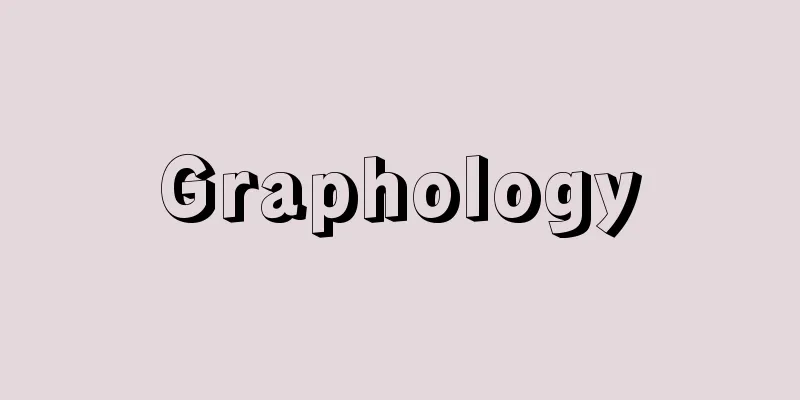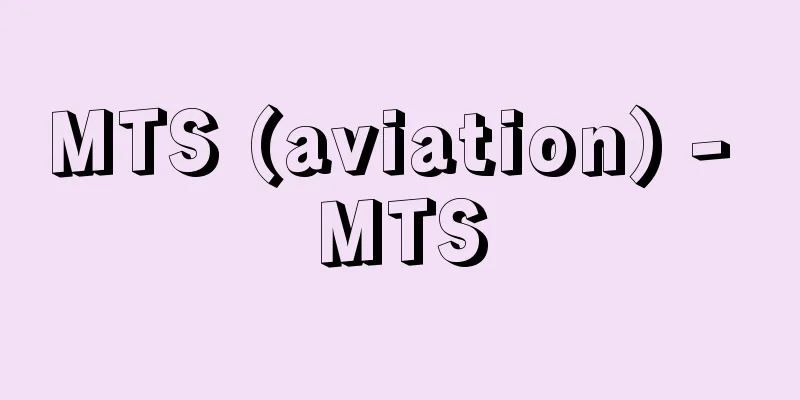Graphology

|
The study of the relationship between handwriting and the writer. There are two major areas: personality graphology, which examines the relationship between handwriting characteristics and personality traits, and author identification (or identity testing), which examines whether multiple handwritings are written by the same or different people. [Masanobu Kuroda] historyIt is believed that the origin of graphology can be traced back to Johann Kaspar Lavater (1741-1801), a Swiss Protestant pastor who was a friend of Goethe. He intuitively described the relationship between the facial features of people and animals and their personalities (physiognomy, or Physiognomik in German), and included handwriting research in the third volume of his book Fragments on Physiognomy (1775-78). This caused a stir, and in France, great masters such as Hippolyte Michon (1806-81) and J. Crépieux-Jamin (1858-1940) appeared. The German Klages organized and integrated the various graphological discoveries that had been made up to that point into a systematic theory. Physiognomy from the standpoint of graphology was now almost complete, and subsequent developments took the form of partial fine-tuning or a combination with experimental psychology. That is, experimental psychologists continued to conduct correlational research on the reliability of graphological judgments for a while, but as the results were mostly positive, research questioning reliability disappeared. Instead, active research into using handwriting as a factor in personality diagnosis became popular, and relationships with various factors such as intelligence, body type, reaction time, anxiety, hypnosis, illness, and mental illness were pursued. There are many well-known scholars involved in graphology research, including F. Krüger, Kretschmer, G.W. Allport, and Arnheim. On the other hand, in China and Japan, there has been ink color since ancient times, and "ink" means something written with ink, and "color" means a characteristic color or feature, which means graphology. Ink color observes the individual characteristics of handwriting, but it also refers to one's fate in life, and there is a leap. For example, people who write the character "Ichi" without pressing the end of the stroke well will die young. The founder of the scientific analysis of Japanese handwriting was the psychiatrist Kure Shuzo, who, in his "The Handwriting of Mentally Ill" (1892), examined the handwriting characteristics of various mentally ill people after examining the movement of writing from a physiological perspective. The psychologist Matsumoto Matataro considered calligraphy to be an object of aesthetic appreciation, but denied any relationship to personality, and his influence extended to Kido Mantaro and Inui Takashi. Research on the positive side has been conducted by Kuroda Masasuke, Machida Kinichi, Aiba Hitoshi and others. Recently, Makita Hitoshi had many university students make various assessments based on a checklist of handwriting characteristics that arose in response to the SCT (Scientific Counseling Test). The results were subjected to factor analysis, and he succeeded in extracting handwriting patterns that corresponded to Kretschmer's personality types. Research on writer identification is often reported in the Reports of the National Research Institute of Police Science. Records and measurements of writing movements were also conducted at Hiroshima University (Yoshioka Ichiro, 1956; Kobayashi Toshinobu, 1979). One ideal way to identify writers would be to use objective handwriting analysis by electronically reading the stroke characteristics, and research on this has also been conducted at Nagoya University (Yoshimura Mitsu and others). [Masanobu Kuroda] The nature of handwritingIt is a mistake to think of handwriting as simply a collection of lines of various shapes. Handwriting is the trajectory of a unique writing movement, and writing movement is part of the movement of the entire body. When personality traits are discussed, most of them are characteristics of bodily movements; for example, being clumsy, relaxed, or hasty. It is due to this principle that character is revealed in handwriting. In addition, handwriting is influenced by images of the shape of the letters and the brush strokes (Leitbild, in German). Furthermore, pseudo-spatial experiences are combined with the overall impression of the page. The top of the page is the sky, the bottom is the earth, the direction of the brush stroke is the future, and the opposite is the past. [Masanobu Kuroda] Handwriting characteristics and personality traitsA personality trait that is likely to show up in handwriting is a strong sense of inertia, which makes it difficult to take action, but once it starts, it is difficult to stop. The handwriting of such people is characterized by irregularity and strong, curved strokes. If inertia is weak, the handwriting will be regular, with horizontal and vertical lines parallel to each other, and with soft connections between strokes. If inertia is weak, it is easy to control oneself and emotions will flow smoothly. If ideals and dreams are strong, guiding images will be dominant, and the handwriting will show strong styles and poses. [Masanobu Kuroda] "The Psychology of Calligraphy: The Development and Issues of Graphology, by Kuroda Masanori, revised edition (1980, Seishin Shobo)" ▽ "The Psychology of Calligraphy: Solving People's Mysteries Through Calligraphy, by Kuroda Masanori (included in "The History of Calligraphy in Japan 4: Muromachi/Sengoku Edition," edited by Sato Shinichi and Ushita Norihiko, 1975, Heibonsha)" ▽ "Diagnosis of Personality Through SCT Handwriting: A Basic Study of Expressive Behavior," by Makita Hitoshi (1983, Kaneko Shobo)" ▽ "Personality Psychology, Volume 2, by G.W. Allport, supervised translation by Imada Megumi (1978, Seishin Shobo)" Source: Shogakukan Encyclopedia Nipponica About Encyclopedia Nipponica Information | Legend |
|
筆跡とそれを書いた人の関係の研究。二大領域があり、一つは性格学的筆跡学で、筆跡特徴と性格特徴の関係を調べる。他は執筆者鑑別(または同一性検定)で、複数筆跡間の執筆者が同一人か別人かを調べる。 [黒田正典] 歴史発祥は、ゲーテも友人であったスイスのプロテスタント牧師ラバーターJohann Kaspar Lavater(1741―1801)にあると考えられる。彼は人や動物の面相(相貌(そうぼう)、顔つき)と性格の関係の直観的記述(すなわち面相学、ドイツ語でPhysiognomik)を行い、その著『面相学的断章』(1775~78)第三巻のなかに筆跡研究も含まれていた。これが反響をよび、フランスではイポリート・ミションJ. H. Michon(1806―81)、クレピュー・ジャマンJ. Crépieux-Jamin(1858―1940)らの大家が現れた。ドイツのクラーゲスは、それまでの多種多様の筆跡学的発見を整理・統合して体系的理論とした。面相学的立場の筆跡学はこれでほぼ完成し、以後の発展は部分的な微調整とか実験心理学との結合の形をとる。すなわち筆跡学的判断の信頼性について実験心理学者による相関関係の研究がしばらく続いたが、肯定的結果も多く、信頼性を問う研究は消えた。かわって筆跡を人格診断の一要因とする積極的研究が盛んになり、知能、体型、反応時間、不安、催眠、疾病、精神病その他、種々の要因との関係が追究された。筆跡研究に関係した著名な学者として、F・クリューガー、クレッチマー、G・W・オールポート、アルンハイムその他、数が多い。 他方、中国、日本では古くから墨色があり、「墨」は墨で書いたもの、「色」は特色の色で特徴の意味であり、つまりは筆跡学である。墨色は筆跡の個性的特徴を観察するが、生涯の運命までも言及し、飛躍がある。たとえば、終筆をよく圧(お)さえない一の字を書く人は早死にする、などである。日本人の筆跡の科学的分析の鼻祖は精神医学者呉秀三(くれしゅうぞう)で、その『精神病者の書態』(1892)において書字運動の運動生理学的考察ののち、各種精神病者の筆跡特徴を分析した。心理学者松本亦太郎(またたろう)は書を美的鑑賞の対象と考えたが、性格との関係は否定し、その影響は城戸幡太郎(きどまんたろう)、乾孝(いぬいたかし)に及んだ。肯定的立場の研究は黒田正典(まさすけ)、町田欣一(きんいち)、相場均(あいばひとし)らが行った。最近、槇田仁(まきたひとし)は、人格検査(SCT)への反応として生じた筆跡の特徴について、チェックリストに基づき多くの大学生に種々の評定を行わせた。その結果は因子分析にかけられ、クレッチマーの性格諸類型に対応する筆跡の型を取り出すことに成功した。なお執筆者鑑別に関する研究は、『科学警察研究所報告』にしばしば報告されている。また書字運動の記録・測定は広島大学で行われた(吉岡一郎・1956、小林利宣(としのぶ)・1979)。執筆者鑑別の一理想は字画特徴の電子工学的読み取りによる客観的筆跡鑑定であるが、名古屋大学でもその研究が進められた(吉村ミツらによる)。 [黒田正典] 筆跡の本質筆跡を単にいろいろの形の線の集合と考えるのは誤りである。筆跡は個性的な書字運動の軌跡であり、そして書字運動は身体全体の運動の一部である。人格の特徴が語られるとき、その大部分は身体運動の特徴である。たとえば鈍重、のんびり、せかせかなど。筆跡に性格が表れるのは、この理による。そのほか筆跡には文字の姿や筆遣いに関するイメージ(指導像、ドイツ語でLeitbild)が働く。さらに紙面全体の印象には擬似空間的経験が結合する。紙面の上方は天、下方は地、筆の進行方向は未来、その反対は過去などである。 [黒田正典] 筆跡特徴と性格特徴筆跡に表れやすい性格特徴は、惰性(だせい)の強さで、行動を容易におこせないが、それが始まると容易に止まらない傾向である。こういう人の筆跡は不規則とか字画の強圧・湾曲を特徴とする。惰性が弱ければ、規則正しい形、横線相互・縦線相互の平行、字画と字画の柔らかな連絡などとなる。惰性が弱ければ、自己の制御が容易であったり、感情が滑らかに流露したりする。また理想・夢想が強ければ、指導像が優位となり、筆跡は強いスタイル、ポーズを示す。 [黒田正典] 『黒田正典著『書の心理――筆跡心理学の発達と課題』改訂版(1980・誠信書房)』▽『黒田正典著『書の心理――書による人の謎解きについて』(佐藤進一・羽下徳彦編『書の日本史4 室町/戦国編』所収・1975・平凡社)』▽『槇田仁著『SCT筆跡による性格の診断――表出行動についての基礎的研究』(1983・金子書房)』▽『G・W・オルポート著、今田恵監訳『人格心理学 下』(1978・誠信書房)』 出典 小学館 日本大百科全書(ニッポニカ)日本大百科全書(ニッポニカ)について 情報 | 凡例 |
>>: Essential fatty acids - Hissushibosan
Recommend
Utairiku Kannonkyo - Utairiku Kannonkyo
This is a Naniwabushi play. Based on the story of ...
Ghost Story of Moonlit Forest - Ghost Story of Moonlit Forest
...At the age of 20, she married the Kurachi fami...
Matsujiro Shirai - Matsujiro Shirai
Born: December 13, 1877 in Kyoto [Died] January 23...
Oligopeptide
A peptide consisting of a relatively small number ...
Toyo Takushoku Co., Ltd.
A national policy company established by Japan in...
Pressure thrust - Pressure thrust
…The output of a propulsion engine is expressed i...
Machining - Kikai Kakou (English spelling) Machining
The use of machine tools to process metal or simil...
Iris hollandica (English spelling) Irishollandica
…[Hiroshi Aramata]. … *Some of the terminology th...
Powell,RSB-(English spelling) PowellRSB
…The organization and movement of the Boy Scouts ...
Schlechtendalia
...In Tokyo, they are called "Oowata" o...
Hard storehouse
…JR Joban Line and National Route 6 run through t...
Nakhichevan' (Autonomous Republic)
An autonomous republic within the Trans-Caucasian ...
billfish
... The alligator gar ( Lepisosteus spatula ), fo...
Nubia (English spelling)
An ancient place name in the northeast of the Afri...
Pereda
Spanish author. A typical regional novelist, he ex...









